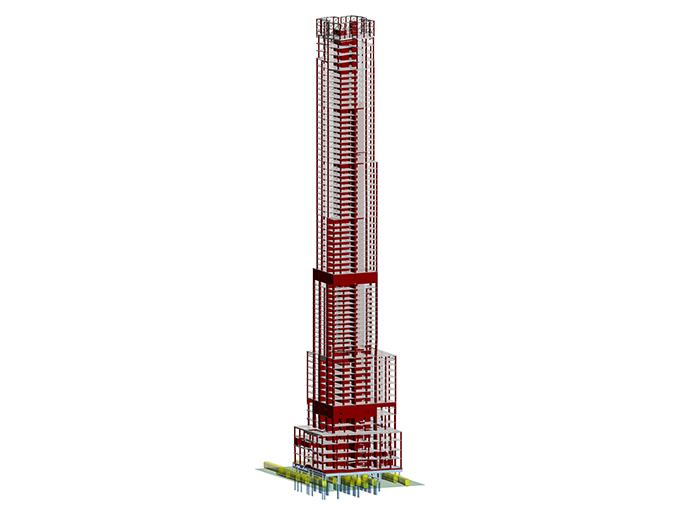
Rising high in the skies over New York City, Chicago, Hong Kong, and other great metropolises are tall towers that appear impossibly slender. Fueled mostly by market demand from wealthy clients who desire spectacular views, the design and construction of these superslim, generally residential skyscrapers also depend on engineering advances over recent decades in building materials and damping technologies as well as careful coordination by the design teams.
. . .
Although market demand has played a leading role in the development of tall, slender structures, advances in engineering and improvements in the strengths of building materials have also been critical. Not long ago, a typical material strength for concrete might have been 10,000 or 12,000 psi, notes Charles Besjak, P.E., S.E., F.AIA, M.ASCE, the director of structural engineering in the New York City office of Skidmore, Owings & Merrill (SOM). “But now we can get up to 18,000 or even 20,000 psi,” Besjak explains, which is a substantial change because it enables engineers to minimize the thickness of concrete walls and thus keep the structural systems from intruding too much within the building’s interior spaces.
. . .
For SOM’s Besjak, the most important lesson to take away from the design and construction of tall, slender towers is the need for engineers to be involved in the project as early as possible. “This is not a ‘sit back and wait for the architect to design’ situation,” Besjak explains. “It’s paramount that the structural engineers be involved in the design process at an early stage!”